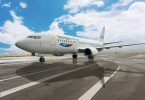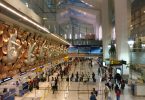INDIA (eTN) – Within a few weeks of the devastating effects of attacks of September 11, 2001 in the United States of America, four international airlines, including SwissAir, Sabena, and CAN 3000, closed up shop and stopped flights from their respective destinations. Also, two US-based carriers – United Airlines and US Air – filed for protection under Chapter 11 in 2002 and 2003. With 99 aircraft, CAN 3000 was Canada’s second largest airline, Air Canada on the other hand experienced a series of problems and had to be restructured before pulling itself out of troubled waters a year later. What caused some of the most renowned airlines in the world to resort to such dramatic and unpleasant measures?
While there were many causes ranging from an excess supply of inventory, over staffing, and faulty pricing, to fluctuating in prices of aviation fuel, there is no denying many (airlines) were bleeding even before 9/11 took place. Sensing a dramatic fall in demand for air travel (post 9/11), coupled with sustained losses, many have prompted these airlines to take such a drastic step. The lessons one could reasonably infer from events post 9/11 was all it needs is a trigger of unfavorable events for the airlines business to fall into disarray, considering most airlines operate on wafer-thin profit margins and barely have reserves to tide over uncertainties. Successful airlines like Lufthansa and Singapore Airlines (to name a few) are clear and rare exceptions to the rule.
Back home in India, the great revolution in air travel took place in the early 90s when East West Airlines started operating its services pan India and became a competitor to the government-owned Indian Airlines. Damania Airways and Modiluft joined into the fray as well. While all these privately-owned airlines operated and managed successful services, competition proved too much for Indian aviation. Modifuft folded up within a couple of years, Damania Airways sold its stake to NEPC – a non-starter. Though it enjoyed tremendous success and was popular with the middle class, East West finally pulled down its shutters after half a decade of momentous flying.
Jet Airways emerged in the mid-nineties, did an excellent job, expanded rapidly giving Indian Airlines a run for its money, and rapidly ate into its market share. Both airlines did fairly well, financially expanding the route network to many new destinations.
The second revolution in Indian aviation began when low-cost carrier Deccan Aviation made its entry into the domestic arena around 2004. Offering fares at unbelievably low prices, it encouraged a new class of travelers (previously using rail travel) to travel by air. Besides saving valuable time, it came as a breath of fresh air for India’s traveling public. The low-cost carrier model was born with other carriers joining the fray for a share of “the share.” Sahara Airlines and Go Air were among the other biggies who set up shop at major domestic airports.
Kingfisher Airlines started out as a full-service carrier only to probably realize that the low-cost model couldn’t be wiped out from its list. In a couple of years, it bought out LCC Deccan Aviation hoping it would consolidate its market position as India’s leading carrier. Jet Airways, not to be left out, acquired Sahara Airways for an astronomical price (later disputed in court).
Unfortunately, during this period while a number of air providers facing substantially increased air fares were struggling to stay up, taxes remained high and operating expenses never really came down. In their desire to not lose out on market share, full-service carriers Indian Airlines (now Air India), Jet Airways, and Kingfisher offered similar prices being offered by LCCs, resulting in full usage of capacity but very low revenue per seat. In the midst of all this, efficient low-cost airlines, Spice Jet and Indigo, began operations across Indian cities. To an extent, both succeeded because of overall efficiency in keeping prices constant, as well as keeping a tight leash on costs.
At about the same time, losses in Air India began mounting to such an extent it needed an infusion of state-owned equity to pump up its operating expenses; the same for Kingfisher Airlines, which never declared a profit since its inception seven years ago, however, government funds never entered this private airline. Jet Airways, on the other hand, declared negligible profits, indicating full-service airlines were finding the going extremely rough.
Coupled by rising prices of aviation fuel, falling value of rupee against the dollar, and stagnation of air fares, all this ensured the current financial year would bring in its fair share of tantrums for the airline industry. It rightly did. Faced with mounting losses, Kingfisher airlines cancelled over 140 flights over last week, signalling an era of rapidly-changing challenges for the domestic aviation industry. All publicly-traded aviation companies declared huge losses for the second quarter, with share prices plunging by almost 70 percent, as compared to the highs of last year.
Looking back over the past 25 years, domestic airlines fares have increased fractionally over this period. While a one-way air ticket from Mumbai to Delhi (a two-hour journey) cost Rs 750 (US$15) in the late eighties, an advance purchase ticket today cost Rs 3000 (US$60), or just over four times the amount. In the meantime, wages and salaries have gone up twenty times and prices of pulses have risen over twenty times, while a kilogram of consumable rice has increased ten times. The cost of capital has increased and so has the cost of aircraft and aviation fuel. Falling air prices are good for the tourism industry, however, it does not augur well for the financial health of a struggling aviation industry. The case for increasing air fares seems an inevitable conclusion, to which one must add better management practices and hopes for an early settlement of the global financial crisis.
To conclude, what are the parallels one can draw from post 9/11 events and today’s crisis affecting Indian domestic airlines, primarily Kingfisher? 9/11 came out of the blue, yet in the preceding period, airlines were not really posting spectacular results. Loss-making airlines unable to weather losses may have used the events of 9/11 to restructure themselves. Today’s uncertainty isn’t really helping the domestic aviation industry as airline after airline clamors for market share disregarding (at times) profitability. The cracks are beginning to show. More than ever this industry needs government support in the form of lowering of taxes; soft loans for purchasing aviation fuel; and lower airport handling costs, better management, and higher air fares. A further five to seven percent depreciation of the rupee against the dollar could precipitate an unwarranted crisis.
Lessons need to be learned from what transpired after 9/11. If not, we could see an era of restructuring, consolidation, and stunted growth in domestic aviation. This doesn’t augur well for the Indian economy, currently growing at 7.5 percent and witnessing doubling of fliers each year across Indian skies.






















